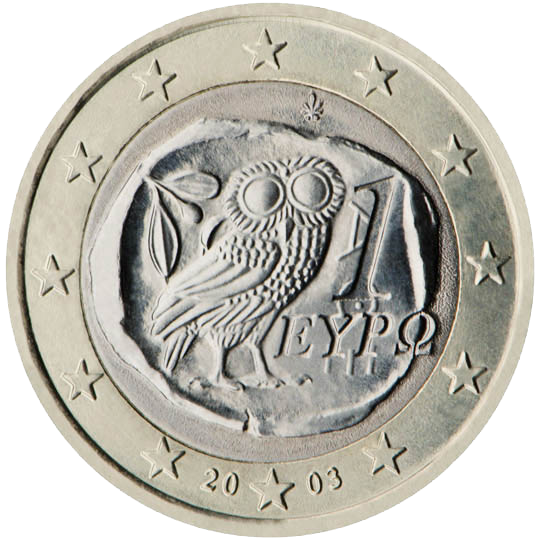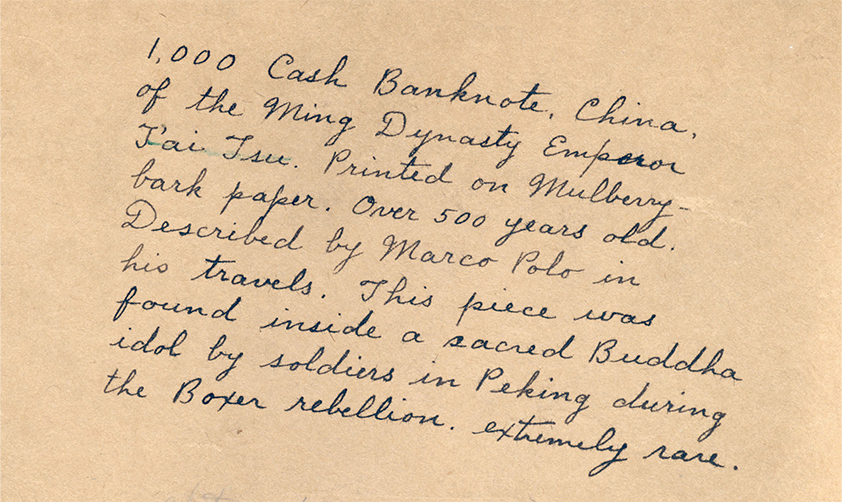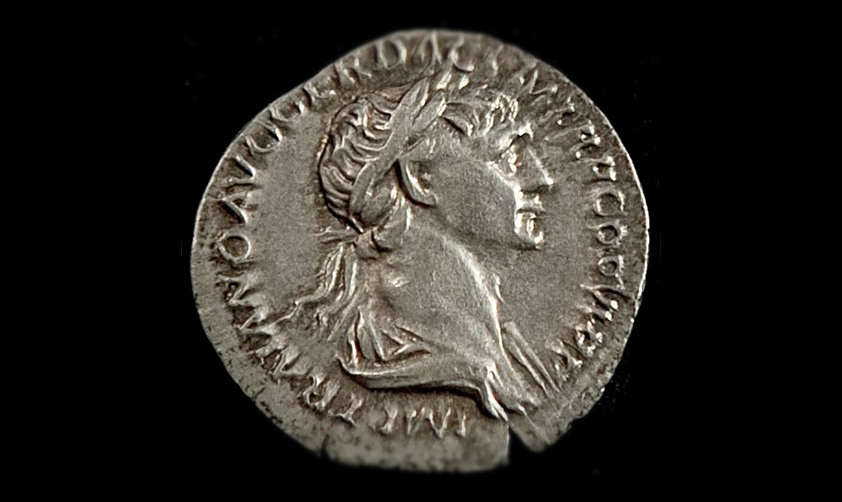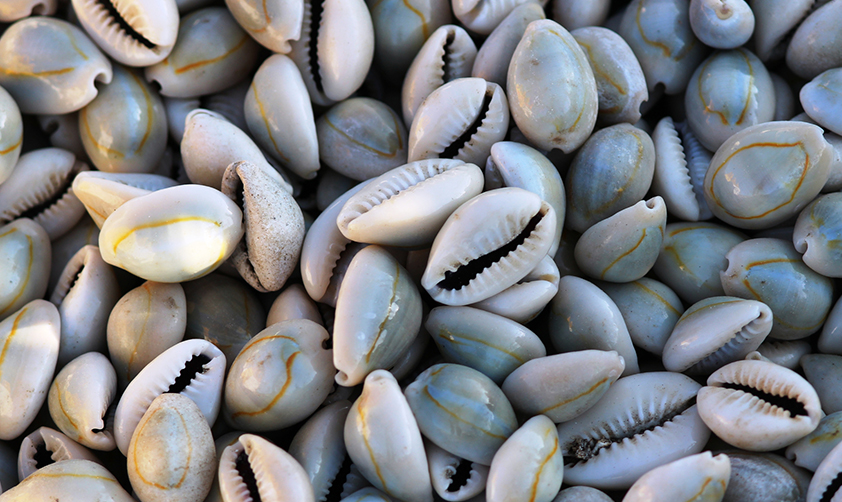
Figure 1. Silver incuse tetradrachm from Athens (6th-5th century BCE). A feature on a coin (inscription, image or other) is described as incuse when, instead of being in relief, it is hollow in relation to the field of the coin.
Where did you see this owl before?
If you have visited 'The Adventure of Money' you will have seen an original, but you may not be aware that you could also have held one, as part of your small change. Let's see why. The tetradrachm was a coin minted from the 6th century BCE by the Greek city-states, each of which would mint coins with their symbols. Ancient Greek coin art was linked to the cult of the divinities, who were typically represented by their conventional effigy, sacred animals and 'talking' symbols. At Thebes, coins were impressed with the Boeotian shield, after the gold shields held in the citadel of Chaeronea. Coins from Rhodes celebrated the god Helios, protector of the island, and had his image on their obverse ('heads'); on the reverse ('tails'), instead, was a rose in bloom, evoking the origin of the island's name. The best known coin, however, is certainly the Athenian tetradrachm. On its obverse, this coin had the helmeted head of the goddess Athena, protector of the city, and three distinctive olive leaves, whereas on the reverse was the owl, sacred to the goddess, with an olive branch and a crescent (quarter moon) in the background.
The Athenian tetradrachm spread rapidly throughout the Greek world. When Athens achieved a dominant position in international trade, its owl (and also, though to a lesser extent, the island of Aegina's turtle and Corinth’s Pegasus) also rose to the rank of international currency, to a degree we may compare to that now enjoyed by the dollar, both in terms of prestige and circulation.
As well as being instrumental to the commercial power of city-states, these coins were also a potent symbol of their identity and carried great political value. As a result, when a city was conquered, its symbols would be replaced by those of the conquerors.
But let us return to the original question. In answering, we should remember that, in accordance with guidelines established by the European Central Bank, euro banknotes (of which there are seven denominations) have common graphics for all the Member States; but euro coins (which are issued in eight denominations, from 1 cent to €2) have a design on the reverse that is common to all euro-area countries, and a design on the front that is specific to each nation. The Greek series of euro coins was designed by Georgios Stamatopoulos, and it was decided the €1 and €2 coins would be dedicated to ancient Greek mythology. And so it was that the owl sacred to the goddess Athena was chosen for the €1 denomination, with a faithful reproduction of the 5th century BCE Athenian tetradrachm.
So, if you look inside your pocket, see whether you happen to find a €1 coin issued in Greece… you will also have found our owl.

Figure 2. €1 coin, Greek reverse side with the owl of the Athenian tetradrachm.









